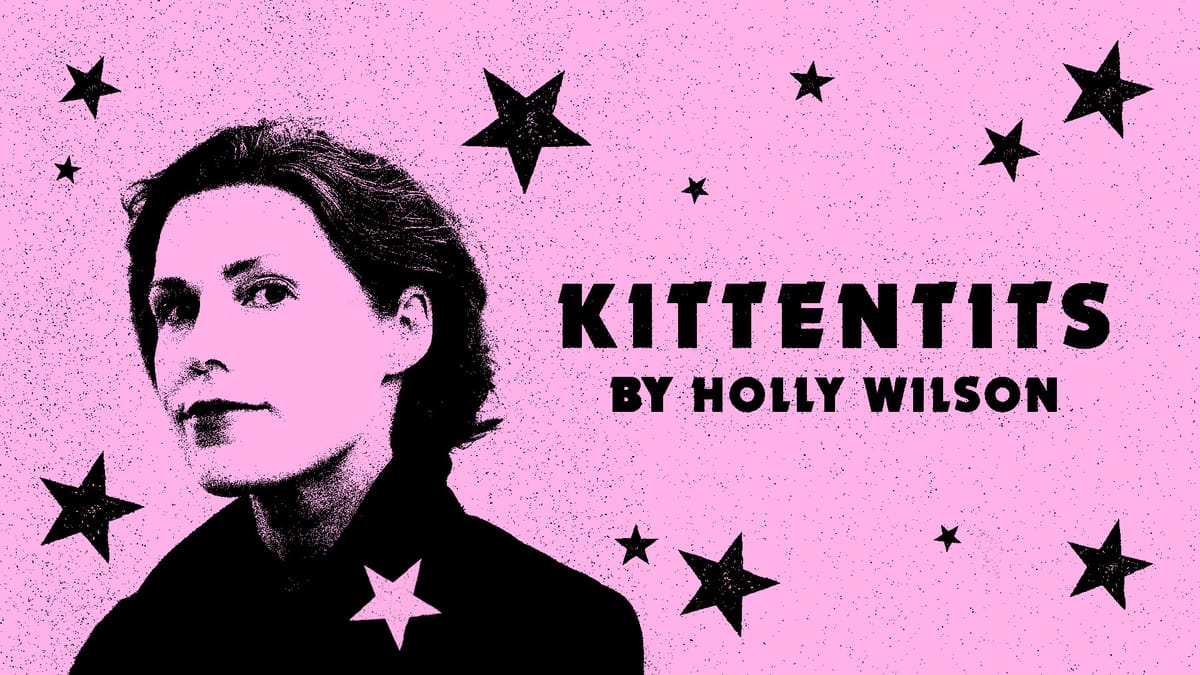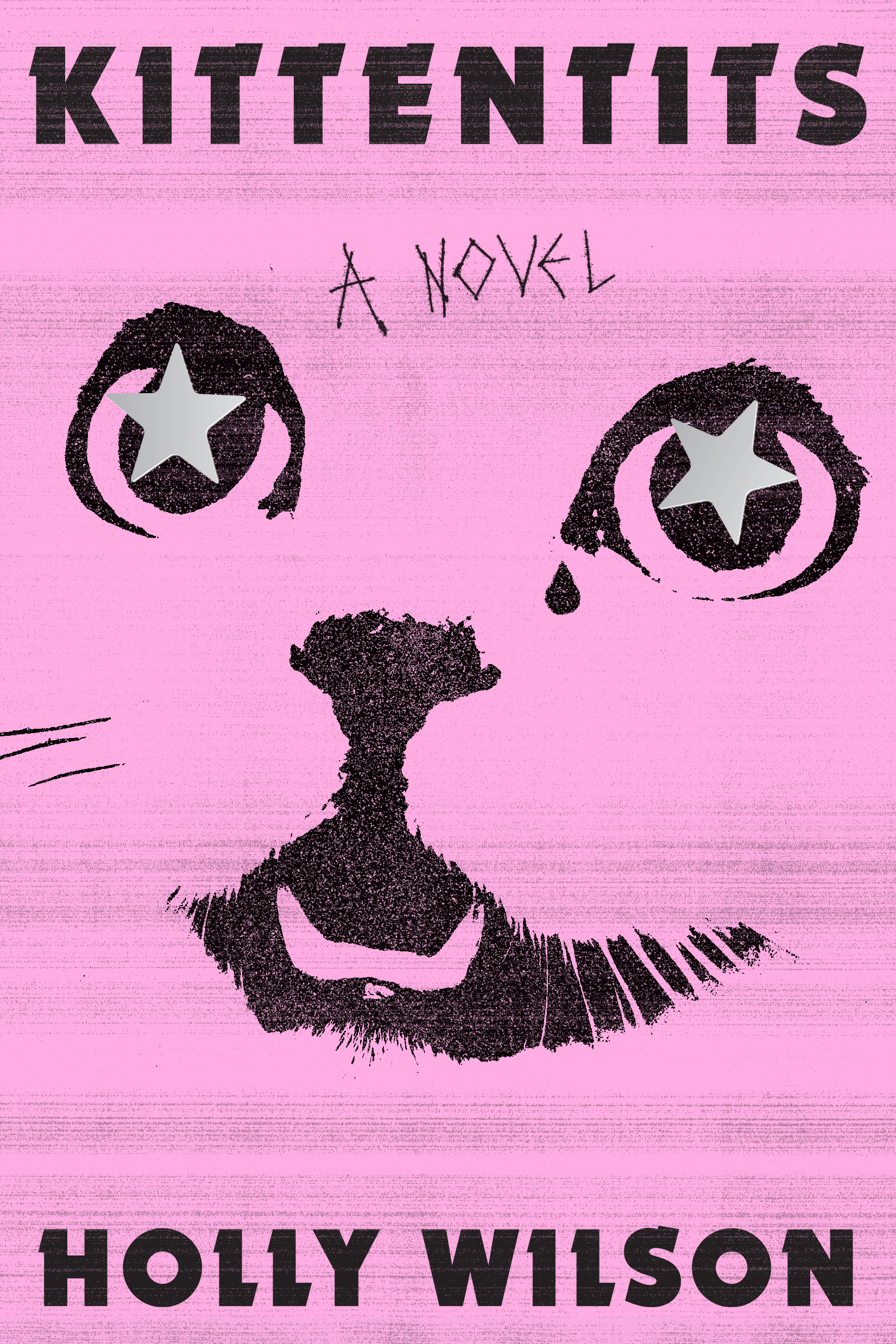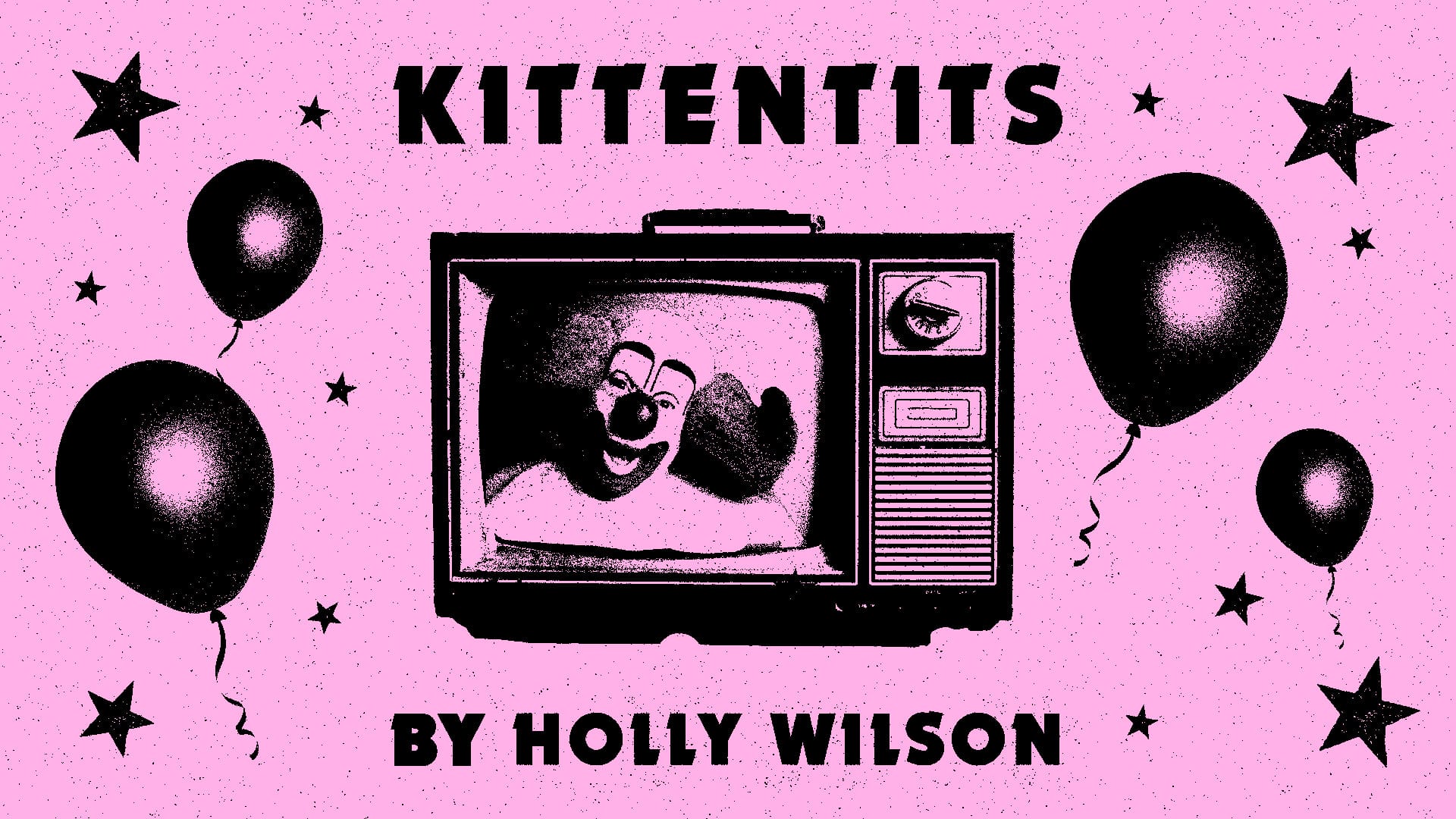‘The world as it is must always be available to writers:’ An interview with Holly Wilson
In her debut novel “Kittentits,” the Nickerson, Kansas native introduces us to Molly, a potty-mouth 10-year-old who runs away from home to find her idol and raise the dead.

Kansas native and Wichita State alumnus Holly Wilson celebrated the release of her first novel on May 21. “Kittentits” is the story of Molly, a 10-year-old self-proclaimed necromancer who idolizes an ex-con dirt-bike racer and makes friends with ghosts. It’s one of the first books released under an imprint created by Gillian Flynn, the über-bestselling author of “Gone Girl.” The Los Angeles Times named it one of the 20 best books of the summer.
I met Wilson in a graduate English class at Wichita State back in the mid-aughts. In the first work of hers I ever read, she explored class and power through a short story about a lunch lady, a rabble-rousing young teacher, and an epic cafeteria food fight. Though Wilson and I haven't kept in close touch over the past couple of decades, I still think about that story.
We met up in a Google Doc to discuss this truly outstanding novel, now available in bookstores everywhere. The following interview has been lightly edited for length, clarity and style.
Our free email newsletter is like having a friend who always knows what's happening
Get the scoop on Wichita’s arts & culture scene: events, news, artist opportunities, and more. Free, weekly & worth your while.
No spam. Unsubscribe anytime.
Emily Christensen: “Kittentits” touches on class differences, but grief and loss are also at the center of the novel. That’s heavy stuff. And yet you create these vivid and delightful and (sometimes) profane characters with adventures and personal histories that can reach absurdist heights. How did you come to strike that balance?
Holly Wilson: This is an amazing, complicated question!
Yes, there’s definitely a sense where “serious” fiction – fiction that takes on heavy issues and themes – demands solemnity because of the weight of its subject matter. On the other end are books we regard simply as “fun,” books we turn to for the thrill of an exciting or silly plot. Amazing books exist on both ends of this spectrum, but even describing it as a spectrum is part of the problem. The idea that weight and absurdity, earnestness and irony, can’t coexist, even in the same moment, is false. I sometimes think of it in terms of zooming in and out. When I zoom in and look at a character closely, see all their very human frailties and complexities and struggles, I empathize with them deeply. But when I pull back and zoom way out, see their tiny lives at play in the much bigger picture, it would be a lie not to acknowledge the absurdity.
This isn’t just true of fictional characters, it’s true of everyone, including myself. I am full of complexity, yearning, suffering, and depth, but I am also just a dumb animal, one of billions, walking around the planet for a very short time, taking myself too seriously. Neither of these truths negate the other.
So some writers will pick a particular distance from which to regard their characters – very close (full humanity) or very far away (dumb animals) – and then that distance is fixed throughout the book. But other writers will play with the distance, will be both close and far at different times or at the same time, creating all sorts of effects. Neither approach is better than the other, they’re just different registers. I will say, though, that fiction playing around this way risks losing readers not willing or able to go along with the two-things-true-at-once idea. It requires a kind of bilocation that some readers resist, and that’s okay.
"As for Molly, I find her a flawed and complicated mess and I love her deeply."

EC: While everyone’s lives may look absurd from a distance, few of us attempt to raise the dead on live TV, as the 10-year-old narrator Molly declares she’s done on the first page of the novel. Then again, we all try to make sense of death in different and sometimes absurd ways. I thought of the Lou Reed chatbot created by his longtime partner Laurie Anderson while I was reading “Kittentits.” Is it reductive to ask if you wrote a novel about necromancy in part to work through the grief you were experiencing yourself?
HW: Weirdly, most of the ghost and seance stuff existed in the earliest drafts of the novel well before I lost my husband unexpectedly in 2016. I didn’t work on the book for a few years after that, but then, when I went back to it, I saw that grief was the true through-line for everyone in the novel and rewrote the second half accordingly. It’s tricky, though, because deep grief is inarticulable. It’s pre-linguistic and primal and when you try to render it in language, you’re only going to get inchoate shadows, not the actual thing itself, which is frustrating for a writer. Wrestling with this probably forced me to work through things to some degree, I’m sure. One big change I made was the ending. In the early drafts, Molly, the narrator, always died at the end. When I went back to the manuscript after losing my husband, I knew she had to survive. Hope suddenly felt like this very essential thing. There’s this great line from a Grace Paley story I love: “Everyone, real or invented, deserves the open destiny of life.” We’re denied the “open destiny of life” all the time in real life, but I could choose to give it to Molly, so I did.
EC: I love that you channeled a little bit of hope into the narrative. (And, speaking as a reader, I’m glad Molly survives.)
I keep thinking about “complexity, yearning, suffering, and depth” versus being “just a dumb animal,” and how this contrast may never be more stark than at the age of 10 — Molly’s age.
HW: Ooh, yes, good point about being 10! It’s an interesting age. Some people might think Molly sounds and acts too old for her age, but I disagree. A teenager knows enough about the world to not make the decisions Molly makes, and I think kids can sometimes muster a kind of bravery and boldness teenagers lose in their search for identity and acceptance. That being said, nothing about the story is realistic, everything is turned up loud and absurd. Some readers won’t like this, of course, but I think this is in part because so many child characters are written as empty vessels for the reader to fill with whatever qualities they want. They generally don’t want obnoxiousness or insufferability. That might be what hits first about Molly, but it’s the least important thing about her.
"Art is wild and unpredictable and often meant to make people uncomfortable or have strong emotional responses ... so when someone picks up a novel, they are signing up for surprise and consenting to experience the truth of someone who is not them."
EC: When we first chatted about doing an interview, you noted that, thus far, readers have had a love-hate relationship with your book. Molly’s use of offensive language and her casual, unthinking bigotry are particular sticking points for many. I found these qualities jarring at first, but over the course of the novel I developed a deep affection for her. Have you been surprised by how the book has been received? At the end of the day, how do you feel about Molly?
HW: First let me say that no one should read novels for moral instruction. This should go without saying, but I’m learning that maybe it does not! I’m learning that some readers conflate the world we all wish to live in – one free of bigotry and cruelty and abuse –with the world as it is, the world I seek to reflect back to the reader in some kind of interesting way. The world as it is must always be available to writers. To say otherwise is asking them to flinch. Art is wild and unpredictable and often meant to make people uncomfortable or have strong emotional responses, even very negative ones, so when someone picks up a novel, they are signing up for surprise and consenting to experience the truth of someone who is not them.
More specifically, though, when readers automatically dismiss a novel or character who uses offensive language, they’re refusing to consider the questions the book might be trying to ask. What does it mean to empathize with someone who talks in a way you hate? With someone who’s had a different kind of childhood than you? Who sees the world in a particular way, a way that’s outside your personal experience? Do you feel uncomfortable if you don’t dislike a character like Molly? Do you feel uncomfortable if you do dislike her? Why do you talk the way you talk? Are you “good”? Is she “bad”?
No book is for everyone, of course, and people should read or not read whatever they wish. But believing writers shouldn’t create characters who use offensive language or behave in offensive ways means believing these kinds of questions aren’t monumentally important and shouldn’t be asked. There is nothing remotely progressive about that. It’s narrow and limiting and anti-art, and I’d be lying if I didn’t say I find it troubling.
As for Molly, I find her a flawed and complicated mess and I love her deeply.

EC: I found that the characters you created and the world you built have really stuck with me. I feel like I’ve been to the grounds of the 1992 Chicago World’s Fair and a fictional Dodge City wax museum — neither of which ever existed. Can you tell me a little bit about how you built your fictional world and why you make the choices you did?
HW: I'm so glad it stuck with you! If anything sticks with readers, it's no doubt because the book was stuck in my own head for so long. I started it in 2009 and worked on and off in spurts, sometimes taking years off in between. When something lives in your head that long it gets all kinds of time to marinate and becomes increasingly layered as new ideas show up on their own in the regular flow of life. If you give a draft enough time, you'll see patterns and connections you hadn't noticed before that you can then go back and exploit.
Things that surprise tend to stick, too, so I try to work in a way that enables surprises. For example, at one point I was stuck and needed some device to get the plot moving, so I gave one of the characters a mysterious black box with no idea whatsoever what was inside. Maybe a year later I finally figured out what was inside the box, just an image I thought would be interesting, and then, working backward from the image, I figured out a backstory for her character (she grew up in a wax museum!) that could make the object make sense. Then you do some minor research on wax museums and write the new backstory, then sew it into the draft, which can be tedious, but it's the best way I know to keep things genuinely surprising (and therefore memorable) for the reader. I'm not necessarily advocating for this process, as it took me way longer to finish this book than I would have liked! But I do think it has its benefits.
Holly Wilson’s work has appeared in Narrative, Redivider, Northwest Review, Short Story, New Stories from the South, and elsewhere. She was a Kingsbury Fellow at Florida State, where she received a Ph.D. in creative writing. She grew up in Kansas and currently makes her home in Fort Atkinson, Wisconsin, where she lives with her son. She’s an associate professor of creative writing at the University of Wisconsin-Whitewater.
Emily Christensen is a freelance journalist and news entrepreneur based in Wichita, Kansas. She is one of the co-founders of the SHOUT.
Support Kansas arts writing
The SHOUT is a Wichita-based independent newsroom focused on artists living and working in Kansas. We're partly supported by the generosity of our readers, and every dollar we receive goes directly into the pocket of a contributing writer, editor, or photographer. Click here to support our work with a tax-deductible donation.
❋ Derby man has the kind of voice that turns heads — and chairs
❋ Socializing while sober: how some Wichitans are cultivating alcohol-free communities
❋ As a small creative business closes, the owner mourns
❋ Painting through it: Autumn Noire on 20 years of making art
❋ How a guy from Wichita resurrected 'Dawn of the Dead'
❋ Bygone Friends University museum housed curious collections



